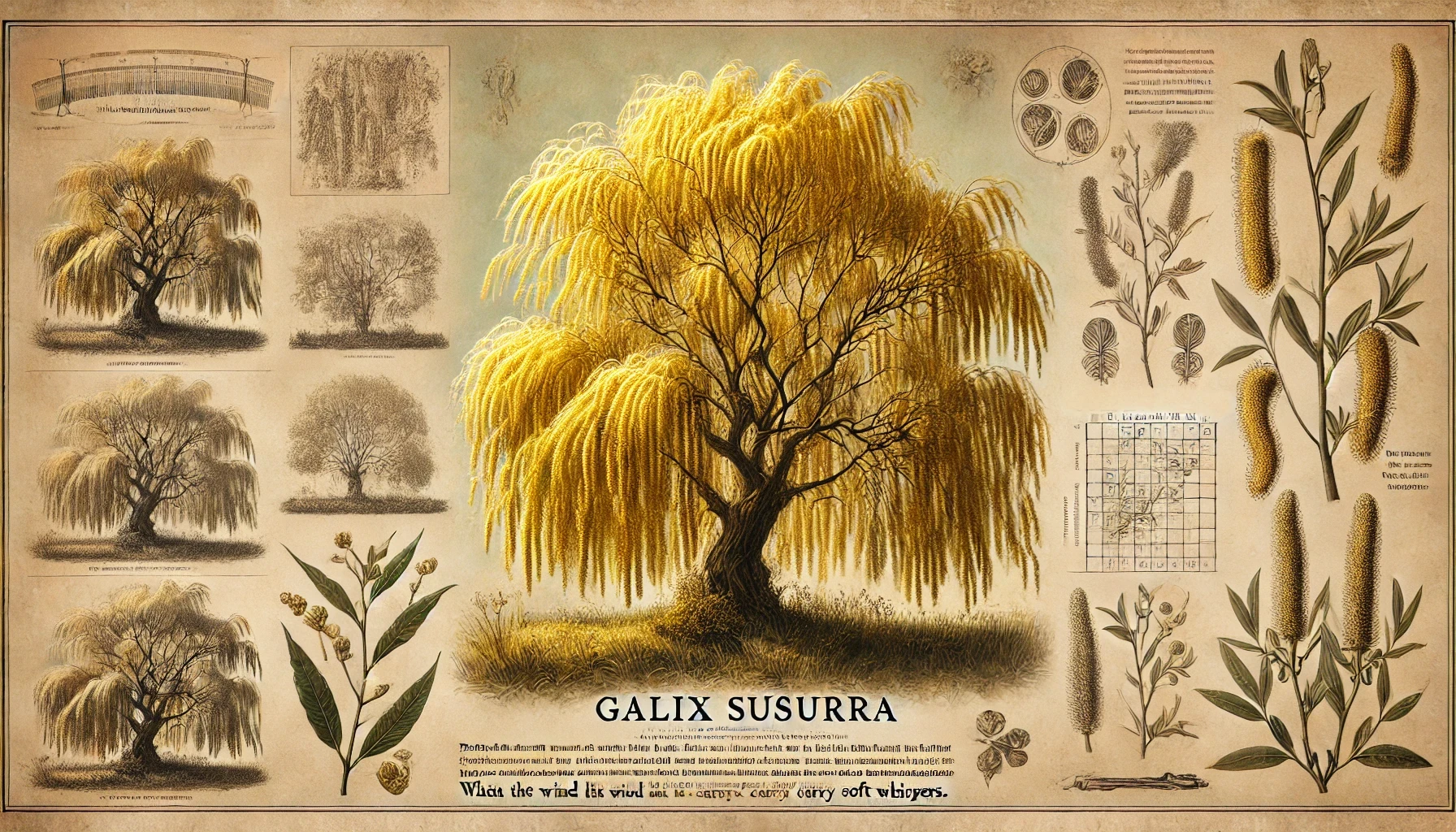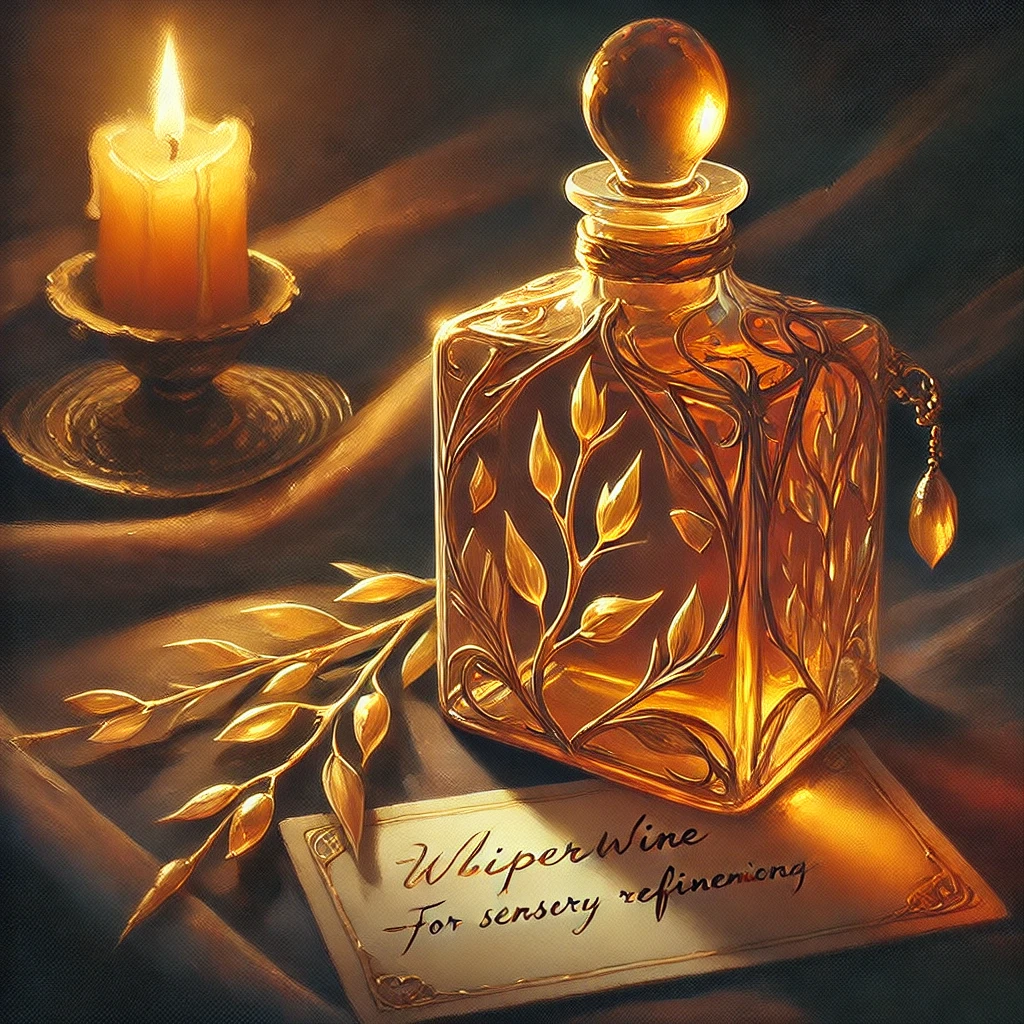Visual Description
The Golden Willow is an imposing yet graceful tree, reaching heights of around thirty feet, with slender, flowing branches draped in luminous cascades of delicate, yellow-golden leaves. These leaves shimmer gently in sunlight, creating an impression of softly dancing lights. When the wind brushes past, it seems to carry the faint sound of indistinct, delicate whispers, as if the tree itself murmurs secrets to the air.
The visual beauty, combined with the mysterious whispering, grants the Golden Willow an enchanting, almost hypnotic presence.
Habitat and Growth
Golden Willows prefer open savannas and sunlit grasslands, thriving in places where ample sunlight reaches their flowing branches. The tree has adapted an unusual reproductive strategy—it releases subtle, alluring pheromones that attract animals, encouraging them to unknowingly transport and disperse its seeds across the landscape.
The willow’s leaves display subtle yet constant movement, often swaying independently of wind conditions, deepening the sense of enchantment—and occasionally unease—for observers.
Alchemical Use and Preparation
The bark of the Golden Willow, harvested carefully during the waning moon, is prized for its unique alchemical properties. When boiled into an infusion, the resulting liquid is known to heighten sensory perception, sharpening sight, hearing, and even touch. Users describe the sensation as becoming profoundly attuned to subtle changes in their environment, as though the world itself is gently whispering its secrets.
Due to its potency, the harvested bark must be stored in a dry, cool environment, protected from moisture or excessive heat, to maintain its efficacy.
Warnings and Curiosities
Extended listening to the tree's quiet murmurs has been known to induce auditory hallucinations, ranging from comforting ancestral voices to unsettling whispers whose content remains just beyond comprehension. The condition—called “Willow Whispers”—can persist long after leaving the tree’s presence.
Golden Willow is often mistaken for the visually similar Sunlit Willow, though the latter lacks any audible whisper and possesses none of the Golden Willow’s alchemical qualities.
Historical Notes and Folklore
In many ancient savanna tribes, the Golden Willow was revered as a sacred dwelling for ancestral spirits. Tribespeople seeking guidance or solace would sit beneath its canopy, listening intently for ancestral voices carried on the wind. Offerings of woven charms and small trinkets were often placed at its roots in gratitude or supplication.
According to tribal legends, those who slept beneath a Golden Willow would awake with new clarity, having received whispered wisdom in their dreams. It was said to bestow guidance only sparingly, and always cryptically, prompting careful interpretation.
“Listen if you must—but beware: not all whispers are meant for your ears.”
— Raleth Korr, Ashroot Diaries
Whisperwine Nights
Among urban alchemists and those in the shadowy circles of high-society intrigue, the Golden Willow’s bark infusion is better known as “Whisperwine”—a discreet but potent aphrodisiac sought for its unique sensory-enhancing effects. Whisperwine is prized because it heightens every subtle sensation and emotion, amplifying touch, scent, taste, and shared intimacy to remarkable intensity.
Its popularity peaked among the wealthy elite of cities such as Kingsmere and Riverhold, where discreet alchemists and apothecaries mixed the bark’s essence into delicately spiced wines or subtle perfumes. Invitations to private gatherings promising “Willow-blessed wines” became tokens of subtle but unmistakable intent.
Yet Whisperwine’s true allure was also its subtle peril. Those who indulged too frequently found themselves unable to clearly separate genuine emotions from the artificial intensity evoked by the infusion. Relationships formed under its influence sometimes faltered when the vivid sensory enchantment faded, leaving behind a lingering uncertainty.



Comments